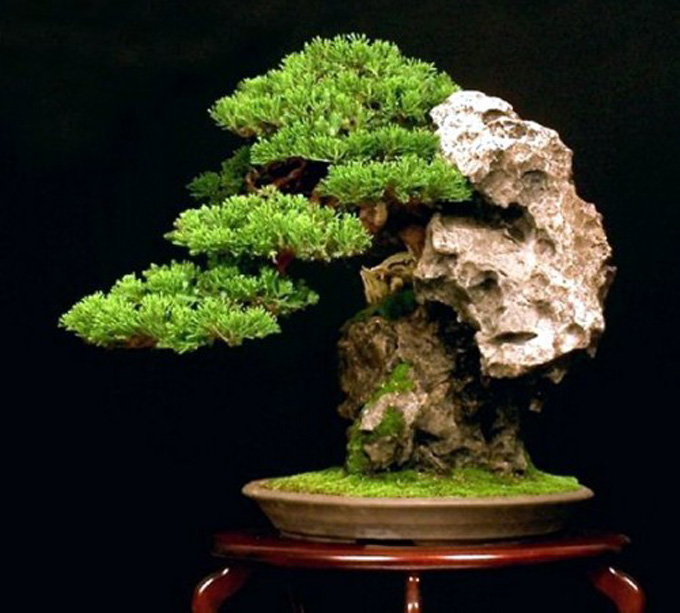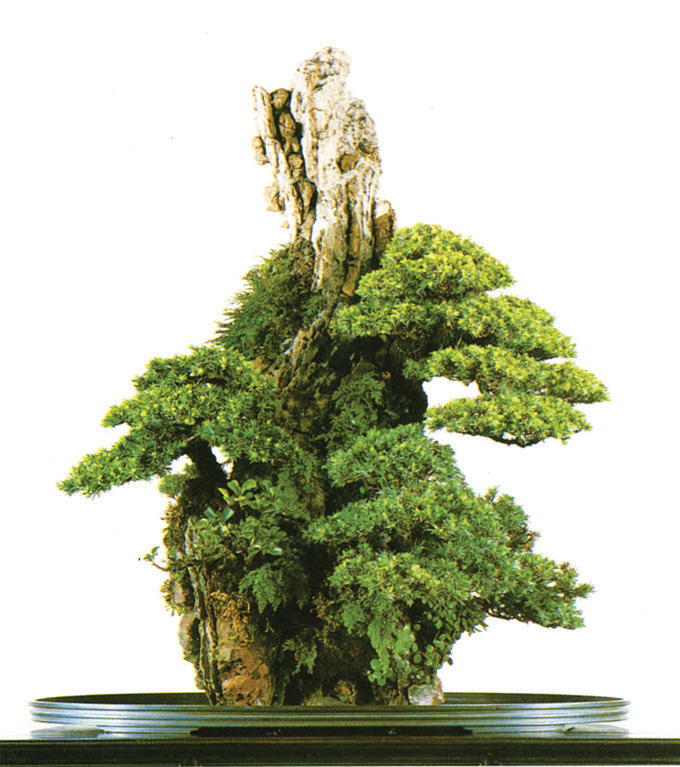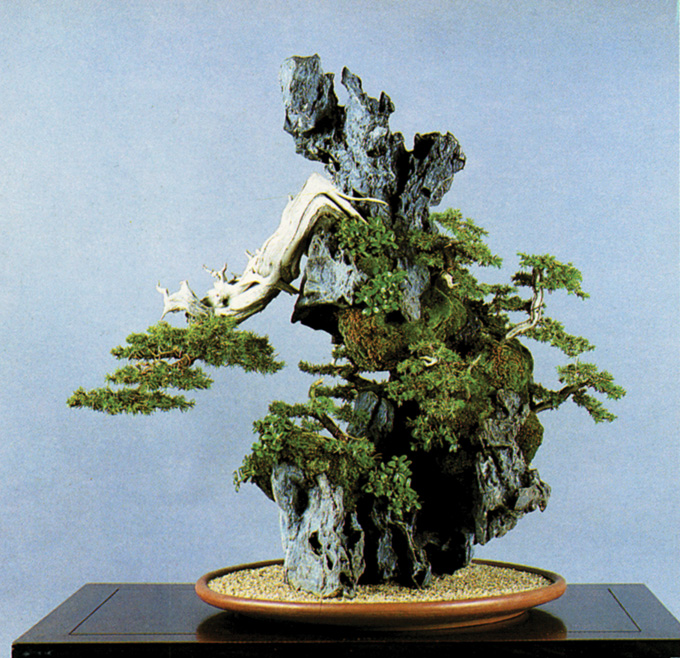This is what can happen when you have a great rock and excellent plant material to work with (a little skill doesn’t hurt either). It’s by Norboru Kaneko, from our Masters’ Series Juniper book.
Last post we featured the development of a root-on-rock planting by Norboru Kaneko from our Masters’ Series Juniper book. Here are two more of his plantings (top and bottom) plus one from Andolfo Bonsai for your enjoyment.
If you search for root-on-rock bonsai, what you’ll find, with a few exceptions, are root-over-rock bonsai. I suspect the reason for this is that root-over-rock, though they take longer, are easier to do and especially easier to maintain, than root-on-rock bonsai.
So, what’s the difference? In a nutshell, the difference is in the name. On-rock means the roots are growing in pockets of soil that are on (on in) the rock. Over-rock means that the roots work their way over (down the sides of) the rock and into soil below (here’s a good example from a recent Bark post). We’ll have more to say in a future post that’s dedicated to root-over-rock bonsai.
 This elegant Juniper (chinensis) root-on-rock bonsai is from Andolfo Bonsai.
This elegant Juniper (chinensis) root-on-rock bonsai is from Andolfo Bonsai.
 Needle junipers and companions growing on a rock. Like the photo at the top of the page, this one is by Norboru Kaneko, from our Masters’ Series Juniper book. Given what we’ve seen so far this post and our last post, it’s safe to say the Mr Kaneko has achieved a degree of mastery when it comes to root-on-rock bonsai.
Needle junipers and companions growing on a rock. Like the photo at the top of the page, this one is by Norboru Kaneko, from our Masters’ Series Juniper book. Given what we’ve seen so far this post and our last post, it’s safe to say the Mr Kaneko has achieved a degree of mastery when it comes to root-on-rock bonsai.

Although I have never tried roots in a rock bonsai, I think that it looks much more natural than roots over a rock. And I am very anxious to try it. Seeing lots of roots draped over a rock makes me feel like the plant is struggling for survival, like what you would see after a flood, or repeated heavy rainfalls. Of course these bonsai’s are doing quite well, as many artists have proven. I prefer the emotion of stability and permanancy that roots within a rock reveal. Emotions are what pulled me into my interest in bonsai originally. You are viewing a complete ecosystem of something that is a delight to look at, from many angles without doing a lot of hiking over rough terrain. My problem is finding a suitable rock. My preference is for a rock with lots of inside hollows and fissures to hold enough growing medium. I want to experiment with different dremel bits so that maybe I can help along this requirement. Nature does this best, but this took a very long time. The color and texture is equally important. Bits of moss and lichen certainly give that long term look. I’m starting to assemble a collection of craggy fissured rocks. Hopefully I will proceed to the next step to get closer to samples of what you have shown us. Looking forward to seeing more bonsai’s in rock.
Hi Brian, thanks for your thoughtful comments.
Yeah, finding the right rock is a big first step and not always that easy.
BTW, there is a place in the New Hampshire’s White Mountains (at the Flume) where there is a whole stand of natural root-over-rock trees. Some are truly amazing, beyond what you might imagine. Not that this is the only place where this occurs. if you spend enough time hiking or otherwise communing with nature, you’ll see trees like this in most mountainous areas.
Still, I agree that in some cases that seeing lots of roots draped over a rock can look a little strange. I guess it just depends on how well it is done.